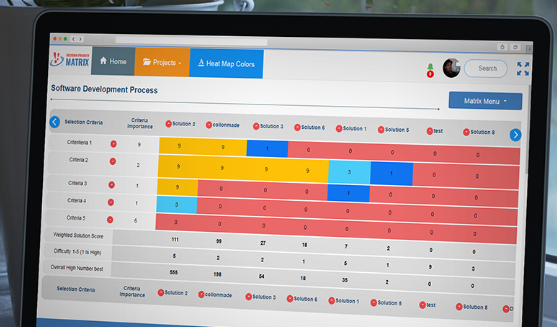Key Decision Making Steps that lead to a Great Business
Are you faced with difficult decisions? What's your next step?

Image Copyright : Gustavo Frazao @123RF
What are the key decision making steps for business owners and managers when they are faced with many difficult decisions.
Choices have to be made because of limited resources. Priorities need to be set? How do you get the best decision?
Good decisions can make phenomenal difference to the creation of your great business. In the company in which I used to work, decision-making was ranked as three times more than any other factor in job assessment. (The other most important factors were relationships and responsibility.)
What makes good decisions
So how do you make good decisions? Peter Drucker, in his book The Effective Executive, states that…
‘The first rule of decision-making is that one
does not make a decision unless there is disagreement.’
The essential decision making step
If there is no disagreement, create options that will create further discussion and debate. Don’t just accept the first option. This is where your staff ‘s involvement is crucial to helping you make good decisions. Surprisingly, initial consensus does not yield the best decisions.
IBM provided over 60% of the World’s Computers in the 1960s to 1980s. Thomas Watson Jr., who continued his father’s work in creating this highly successful computer and software company, promoted only those ‘razor-sharp, irritating, abrasive, unpleasant people who see and tell you about things as they really are’.
You do not need to shout and bawl to disagree. You just need to be assertive. The key words in being assertive are, for example, ‘I am very concerned because….’ The words ‘I’, ‘concerned’ and ‘because’ are key.
Don’t rush into decisions:
Don’t rush into decisions: first, get all the facts that are available, weigh up all the options, and examine and balance the advantages and disadvantages of each option. Involve your staff and seek outside expert opinion. Use computers to help you seek out the optimum: prioritization matrices, trend detection, simulation models, and spreadsheets. Base your decisions on data and facts rather than on intuition.
The decision making steps that have best chances of success?
When evaluating an opportunity or solving a problem Here is seven-step process
- Identify and define a problem or opportunity or goals not met – write it down
- Gather the facts, data and information.
- Analyse and measure the situation – e.g. find causes - ask 5 whys – root cause analysis
- Generate solutions – brainstorm, or better still ‘brainswarming’ – get all interested parties to write down alone a list of their solutions for consideration so solutions are not pre-judged and eliminated by others
- Select Solution. Use a decision making software prioritization tool as described on this next link. To try software go to make-decisions-easy.com and sign in for free and follow the instructions on the main page
 Decision making software Prioritization tool
Decision making software Prioritization tool6. Act on the decision, plan implementation – think small steps – break down a difficult solution with high value benefits into smaller step solutions
7. Implement and test. Assess its success.
Find out more about decision making
Find out more about decision making - see the following links:
- Decision Making Software
- Types of Decision Making
- Decision Making Quotes
- Key Decision Making Tips
- Decision Making Models
- Intuitive Decision Making
- Rational Decision Making
- A Better Decision Making Model
- Key Factors in a Decision Making Process
- Use a PICK chart to Simplify Decisions
Go to Top of Key Decision Making Steps that lead to a Great Business